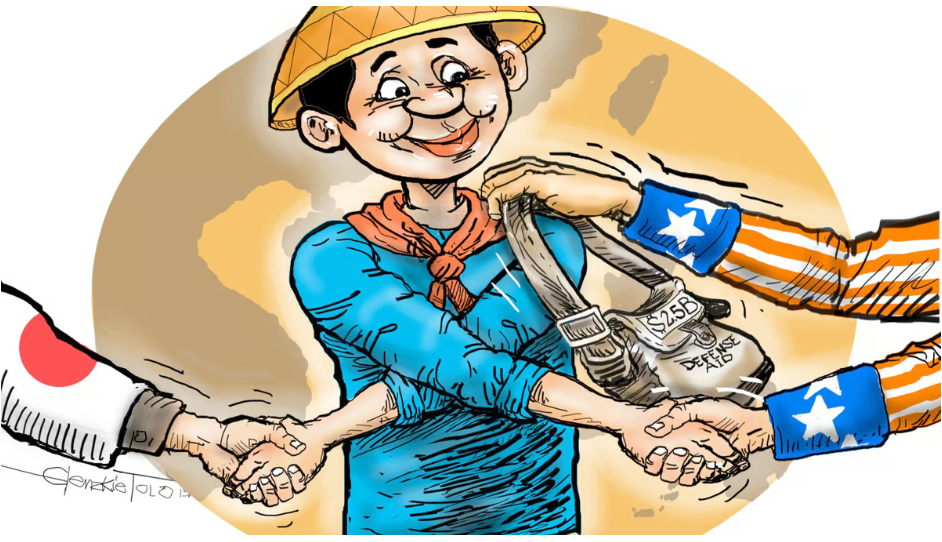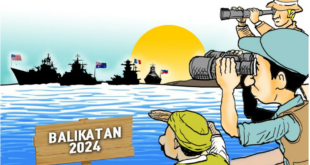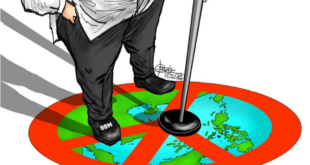The end-summit statement made note of the US’ and Japan’s support for the Philippine Coast Guard capacity building

The message the three world leaders sent at the trilateral summit in Washington, D.C., was pretty clear: you’re the odd man out, China.
Likewise clear was President Ferdinand E. Marcos Jr.’s success in getting US President Joe Biden to erase any ambiguities concerning the effectivity of the 1951 Philippines-US Mutual Defense Treaty.
At the start of the meeting with Japanese Prime Minister Fumio Kishida and President Marcos at the White House, Biden affirmed the mutual defense treaty binding Washington and Manila in the South China Sea.
“United States defense commitments to Japan and the Philippines are ironclad,” Biden stated, emphasizing that “any attack on Philippine aircraft, vessels or armed forces in the South China Sea would invoke our mutual defense treaty.”
Joint vision statement
These commitments were further underscored in the joint statement issued at the end of the trilateral meeting, with the three leaders expressing “serious concern about the People’s Republic of China’s dangerous and aggressive behavior in the South China Sea,” as well as by the “militarization of reclaimed features and unlawful maritime claims in the South China Sea.”
The leaders categorically reiterated “steadfast” opposition to the “dangerous and coercive use of Coast Guard and maritime militia vessels in the South China Sea”. They stressed “serious concern over the PRC’s repeated obstruction of Philippine vessels’ exercise of high seas freedom of navigation and the disruption of supply lines to Second Thomas Shoal,” which, they noted, had long been determined by a “final and legally binding 12 July 2016 Arbitral Tribunal as within the Philippines’ exclusive economic zone.”
The end-summit statement made note of the US’ and Japan’s support for the Philippine Coast Guard capacity building, including Japan’s recent provision of a dozen Coast Guard vessels and plans to provide the PGC with five more vessels.
Plans by the US to undertake more joint patrols in the South China Sea following drills by the US, Australia, Japan, and the Philippines a week ago are sure to fire up China’s temper.
Boost defense vs Sino aggression
On the eve of the trilateral summit, two prominent US senators, Tennessee Republican Senator Bill Hagerty, a former US ambassador to Japan, and Democrat Senator from Virginia Tim Kaine filed a bipartisan bill that would provide the Philippines with a $2.5 billion grant to boost the country’s defenses against Chinese aggression over the next five years.
The trilateral summit was even sweeter for the Philippines regarding potential economic gains. Issued post-meeting was an announcement on the launch of the Luzon Economic Corridor under the first Partnership for Global Infrastructure between the three countries.
Such corridors shall support connectivity between Subic Bay, Clark, Manila, and Batangas. Through this Corridor — part of the Partnership for Global Infrastructure and Investment-Indo Pacific Economic Framework for Prosperity (IPEF) Accelerator — Japan, the Philippines, and the US commit to accelerating investments in high-impact infrastructure projects, including rail and ports modernization, clean energy and semiconductor supply chains and deployments, agribusiness and civilian port upgrades in Subic Bay.
Likewise, a trilateral event aimed at promoting investments in the Luzon Corridor will be held on the sidelines of the Indo-Pacific Business Forum, which will be held in Manila this May.
Co-hosted last year by the Japanese government in Tokyo, the forum is the premier US commercial event in the Indo-Pacific region, taking cognizance of the fact that nearly $900 billion in foreign direct investments in the US were sourced from the region last year.
At the summit’s end, it was also revealed that the US International Development Finance Corporation, the federal government’s finance institution and agency, will be opening a regional office in Manila to facilitate further investments across the Philippines.
The US IDFC is a finance institution and agency of the US government that partners with the private sector to finance and/or invest in sectors including energy, healthcare, critical infrastructure, and technology.
All these, it would seem, drive the point that unlike in the former regime, which had aligned itself deeply with Beijing based on an expected economic bonanza for the country in return, this administration’s alliance with the US promises to yield gains for the economy, in the concrete.
*****
Credit belongs to: tribune.net.ph
 Atin Ito First Filipino Community Newspaper in Ontario
Atin Ito First Filipino Community Newspaper in Ontario






